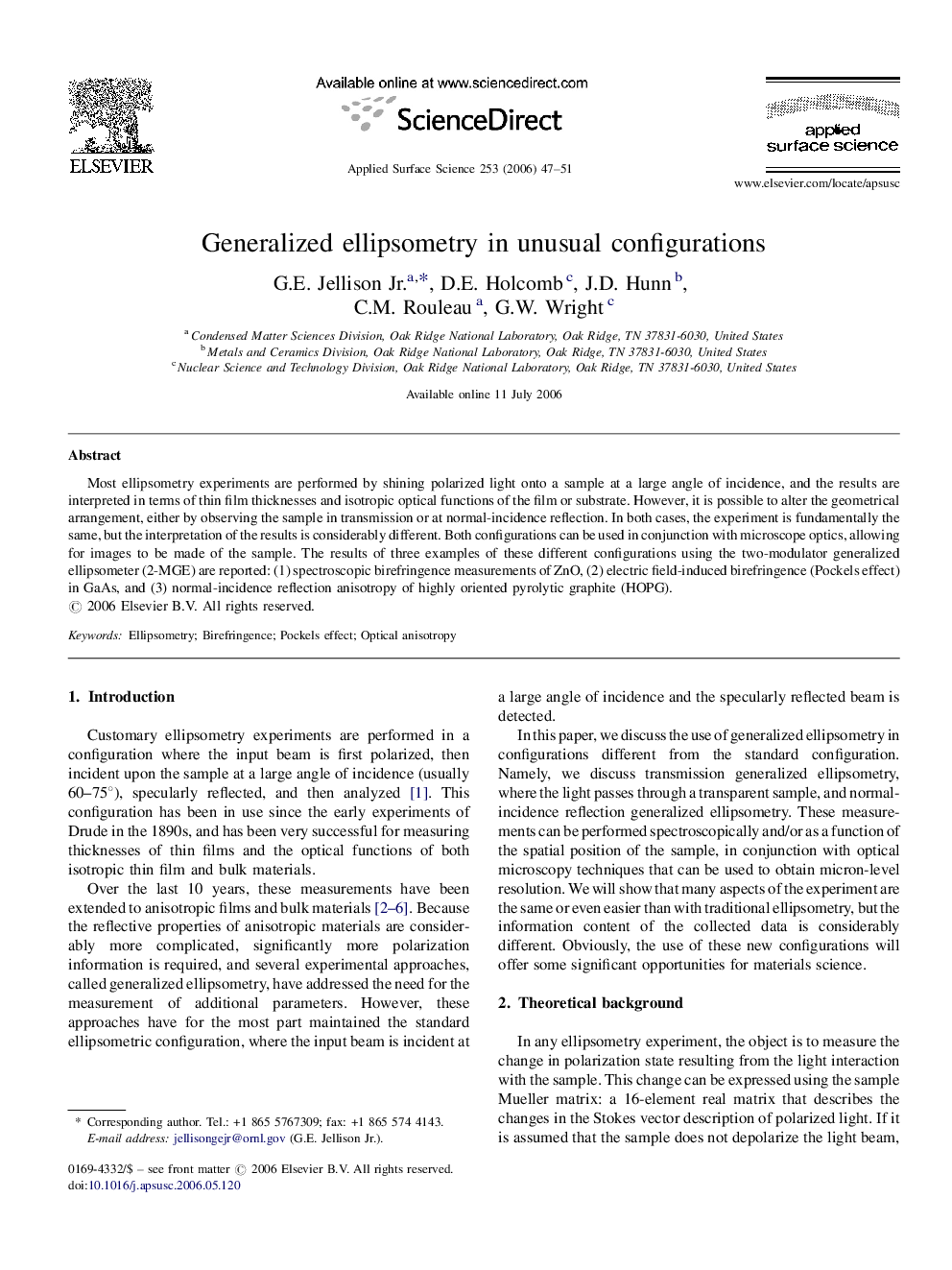| Article ID | Journal | Published Year | Pages | File Type |
|---|---|---|---|---|
| 5368523 | Applied Surface Science | 2006 | 5 Pages |
Most ellipsometry experiments are performed by shining polarized light onto a sample at a large angle of incidence, and the results are interpreted in terms of thin film thicknesses and isotropic optical functions of the film or substrate. However, it is possible to alter the geometrical arrangement, either by observing the sample in transmission or at normal-incidence reflection. In both cases, the experiment is fundamentally the same, but the interpretation of the results is considerably different. Both configurations can be used in conjunction with microscope optics, allowing for images to be made of the sample. The results of three examples of these different configurations using the two-modulator generalized ellipsometer (2-MGE) are reported: (1) spectroscopic birefringence measurements of ZnO, (2) electric field-induced birefringence (Pockels effect) in GaAs, and (3) normal-incidence reflection anisotropy of highly oriented pyrolytic graphite (HOPG).
